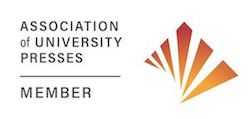The Providence of Wit
Aspects of Form in Augustan Literature and the Arts
Martin C. Battestin
- Summary
- Reviews
- Author Bio(s)
By exploring the relationship between the idea of Nature and the idea of Art in the period from 1660-1760, this study attempts to account for the distinctive quality of the 'Augustan mode' in literature in arts. Before what Pope envisioned as the apocalypse of modernism occurred, artists and aestheticians shared the faith of Newton and the divines in providential order, and, refining the neoclassical doctrine of mimesis, they expressed that faith in theory and practice. In shaping his own ideal forms, the Augustan artist took as paradigm the fiat of Genesis. Showing that theories of 'pure form' in the period rest upon the mutually dependent assumptions of ethnology and aesthetics, Professor Battestin first discusses the ways in which ideas of Nature's harmony, symmetry, and variety affected the doctrine of mimesis in the abstract arts of music, architecture, and gardening. Against the background he next examines the idea of Art and the relationship between form and meaning in the poetry of Pope and Gay and the fiction of Fielding and Godlsmith. THe final chapter, focusing on the deliberate violation of these formal principles in A Tale of Tub and Tristram Shandy, distinguishes between the Augustan and Modern modes by contrasting Swift's implicit acceptance of the ideals of his age with Sterne's sense that they are no logner relevant either to life or to art.
- Summary
- Reviews
- Author Bio(s)
By exploring the relationship between the idea of Nature and the idea of Art in the period from 1660-1760, this study attempts to account for the distinctive quality of the 'Augustan mode' in literature in arts. Before what Pope envisioned as the apocalypse of modernism occurred, artists and aestheticians shared the faith of Newton and the divines in providential order, and, refining the neoclassical doctrine of mimesis, they expressed that faith in theory and practice. In shaping his own ideal forms, the Augustan artist took as paradigm the fiat of Genesis. Showing that theories of 'pure form' in the period rest upon the mutually dependent assumptions of ethnology and aesthetics, Professor Battestin first discusses the ways in which ideas of Nature's harmony, symmetry, and variety affected the doctrine of mimesis in the abstract arts of music, architecture, and gardening. Against the background he next examines the idea of Art and the relationship between form and meaning in the poetry of Pope and Gay and the fiction of Fielding and Godlsmith. THe final chapter, focusing on the deliberate violation of these formal principles in A Tale of Tub and Tristram Shandy, distinguishes between the Augustan and Modern modes by contrasting Swift's implicit acceptance of the ideals of his age with Sterne's sense that they are no logner relevant either to life or to art.
QuickLinks
Find a BookFor Our AuthorsRights and PermissionsRotunda Digital ImprintSupport UVA PressCareer OpportunitiesWalker Cowen Memorial PrizePrivacy PolicyContact Us
- P.O. Box 400318 (Postal)
- Charlottesville, VA 22904-4318
- 210 Sprigg Lane (Courier)
- Charlottesville, VA 22903-2417
- 434 924-3468 (main)
- 1-800-831-3406 (toll-free)
- 434 982-2655 (fax)

the future
of publishing
Affiliates



